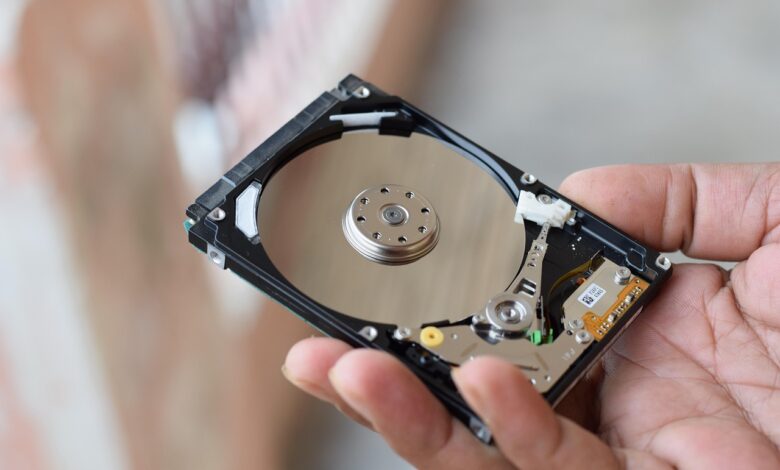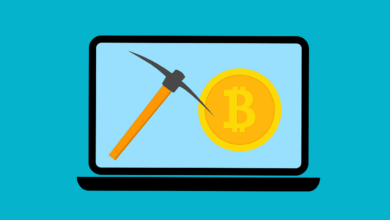Battle of the Brands – Mining Hardware Showdown

In the ever-evolving landscape of cryptocurrency, the quest for supremacy often hinges on one pivotal factor: mining hardware. As enthusiasts and investors alike delve deeper into this digital frontier, the importance of a rigorous analysis of mining rig brands cannot be overstated. With an array of options available, each claiming superiority, discerning which brand truly reigns supreme requires meticulous comparison and evaluation.
This article embarks on a comprehensive journey through the world of mining equipment, offering detailed reviews that juxtapose the leading brands. By assessing performance metrics, energy efficiency, and overall reliability, we aim to provide clarity in a market rife with claims and counterclaims. The complexities of cryptocurrency mining demand not only an understanding of the technology but also a keen eye for quality in hardware–after all, the right rig can significantly impact profitability.
Through careful analysis and thoughtful comparison, we will explore the top contenders in the mining hardware arena. From established giants to emerging players, we will evaluate what sets these brands apart from one another. Which brand offers the best value for your investment? Which equipment delivers optimal performance under varying conditions? Our endeavor is to demystify these questions so that miners can make informed decisions grounded in substantial evidence rather than mere marketing rhetoric.
Join us as we dissect the nuances of cryptocurrency mining hardware, providing insights that empower both novices and seasoned miners alike. In this realm where technology meets finance, understanding the strengths and weaknesses of different brands is not just beneficial–it is essential for anyone seeking to navigate this fascinating yet complex domain.
Top Mining Hardware Brands: A Comprehensive Analysis
In the rapidly evolving landscape of cryptocurrency mining, the choice of hardware plays a pivotal role in determining profitability and efficiency. Various brands have emerged, each offering unique equipment tailored to specific mining needs. This analysis aims to evaluate the top mining hardware brands, comparing their offerings to discern which one reigns supreme in terms of performance, reliability, and value for money.
When considering mining rigs, ASIC (Application-Specific Integrated Circuit) miners are often at the forefront due to their unparalleled efficiency. Brands like Bitmain with their Antminer series and MicroBT with the Whatsminer line have established themselves as frontrunners. For instance, the Antminer S19 Pro is renowned for its hash rate capabilities and energy efficiency, making it a preferred choice among serious miners. However, a comprehensive comparison reveals that MicroBT’s Whatsminer M30S also boasts impressive specifications, encouraging miners to weigh their options carefully.
Moreover, GPU (Graphics Processing Unit) mining continues to attract enthusiasts who prefer versatility in their mining operations. Brands such as NVIDIA and AMD offer graphics cards that cater to a range of cryptocurrencies beyond Bitcoin. The latest GeForce RTX 30 series from NVIDIA has garnered attention for its powerful performance in both gaming and mining contexts. Yet, AMD’s Radeon RX 6000 series provides robust alternatives, particularly appealing for those focused on Ethereum mining. Evaluating these GPU options reveals that while NVIDIA may dominate in raw power, AMD often offers better cost-effectiveness.
Another essential aspect of the hardware comparison involves assessing the longevity and support provided by these brands. Reliability is key; miners need assurance that their investment will not only yield returns but also withstand operational wear and tear. Bitmain has faced scrutiny over production quality in the past, yet it remains a go-to brand due to its established reputation and extensive community support. On the other hand, newer entrants like Canaan Creative have begun to carve out a niche by focusing on customer service and product durability, further enriching the competitive landscape.
Furthermore, energy consumption cannot be overlooked when evaluating mining hardware. As electricity costs constitute a significant portion of operational expenses, brands that prioritize energy-efficient designs often emerge as leaders in the market. For instance, both Bitmain and MicroBT have incorporated advanced technologies into their rigs aimed at reducing power consumption while maximizing output. Analyzing these features is crucial for miners seeking not just performance but sustainable practices in their operations.
In conclusion, the choice of mining hardware brands ultimately depends on various factors including performance metrics, energy efficiency, customer support, and long-term viability. While Bitmain and MicroBT currently lead the market with their specialized ASIC miners, NVIDIA and AMD continue to provide formidable GPU options for diverse mining strategies. By meticulously evaluating these brands through rigorous comparison and reviews, miners can make informed decisions that align with their goals in the ever-competitive realm of cryptocurrency mining. The quest for the best mining equipment is not merely about immediate results; it’s about establishing a foundation for future success in a volatile market.
Performance Comparison of Miners: Evaluating the Best Brands in Cryptocurrency Mining Equipment
In the ever-evolving landscape of cryptocurrency mining, selecting the optimal mining hardware is paramount for achieving superior performance and profitability. This analysis aims to compare various brands of mining rigs, scrutinizing their technical specifications, energy efficiency, and overall effectiveness. By conducting thorough reviews of leading manufacturers, we can discern which brand reigns supreme in this competitive arena.
When exploring hardware options, a fundamental aspect to consider is the hash rate–the measure of computational power used to validate transactions and mine new coins. Rig evaluations often reveal significant disparities in performance among different brands. For instance, Bitmain’s Antminer series consistently showcases high hash rates alongside energy-efficient designs, making it a formidable player in the mining equipment market. Conversely, brands like MicroBT with their WhatsMiner line offer competitive hash rates that can rival Bitmain’s offerings, further complicating the decision-making process for potential miners.
Energy consumption is another crucial factor that merits attention during our comparison. Mining operations require substantial electricity, significantly impacting overall profitability. Reviews indicate that while some brands excel in raw hash rate performance, they may fall short in energy efficiency. For example, the Innosilicon T3+ boasts impressive hashing capabilities but also consumes considerable power. Thus, a nuanced analysis of both performance and energy efficiency is essential for miners seeking the best return on investment.
Additionally, the durability and reliability of mining rigs play an integral role in long-term success. Brands such as Canaan Creative have garnered a reputation for producing robust hardware that withstands the rigors of continuous operation. However, even within this realm, there are variations; some models may experience overheating or hardware failures under prolonged use. A comprehensive review of user feedback and expert evaluations can shed light on which brands consistently deliver reliable equipment versus those that may falter after extended periods.
The landscape of cryptocurrency mining is continuously shifting with technological advancements and market fluctuations. Therefore, periodic assessments of hardware performance remain crucial for miners aiming to stay ahead of the curve. Our comparative analysis will not only focus on current market leaders but also explore emerging brands that could potentially disrupt established hierarchies in the future.
In conclusion, the quest for the supreme mining rig necessitates an informed approach grounded in rigorous evaluation and comparison of available options. By examining key metrics such as hash rate, energy efficiency, reliability, and user experiences across different brands, miners can make educated decisions tailored to their specific needs and operational goals. As we delve deeper into individual brand analyses and equipment reviews, it becomes increasingly clear that no single brand holds an absolute advantage; rather, it is the unique combination of features and performance that ultimately determines which rig is best suited for each miner’s objectives.
Cost-Efficiency in Mining Hardware: A Comprehensive Analysis
In the ever-evolving landscape of cryptocurrency mining, cost-efficiency stands as a paramount consideration for both newcomers and seasoned miners. The choice of mining hardware can significantly impact profitability, making it crucial to conduct thorough comparisons between different brands and models. Reviews of various mining rigs reveal a spectrum of options, each with distinct advantages and disadvantages. Some brands, such as Bitmain and MicroBT, have established themselves as titans in the market, while others attempt to carve out their niches with innovative technologies and competitive pricing. Evaluating these choices requires a meticulous analysis of performance, energy consumption, and initial investment.
When assessing which mining rig reigns supreme in terms of cost-efficiency, one must consider not only the upfront costs but also the long-term operational expenses. For instance, certain models may appear attractive due to their lower purchase price; however, they might consume more electricity or yield lower hash rates than their more expensive counterparts. This nuanced comparison reveals that a higher initial investment can sometimes lead to greater overall savings and profitability over time. Thus, a comprehensive evaluation of equipment must incorporate metrics such as return on investment (ROI) and longevity of hardware performance.
Cryptocurrency mining equipment reviews often highlight specific brands that have garnered positive feedback from users. Notable mentions include brands like Canaan and Innosilicon, which have made strides in producing efficient ASIC miners. Each brand’s unique features, such as cooling systems or user interfaces, can sway a miner’s decision based on individual preferences and operational requirements. Furthermore, community forums and expert analyses provide invaluable insights into real-world performance that may not be immediately apparent from manufacturer specifications alone.
Ultimately, the quest for the best mining hardware involves an intricate dance between personal priorities and market realities. As miners evaluate the top brands based on comprehensive comparisons, it becomes evident that there is no one-size-fits-all solution. Each miner’s circumstances–such as electricity costs in their region or the cryptocurrency they intend to mine–will dictate which brand emerges victorious in their specific context. In this dynamic arena of cryptocurrency mining equipment, informed decisions driven by detailed analysis will undoubtedly determine success or failure in the pursuit of digital wealth.
Conclusion: The Future of Cryptocurrency Mining Hardware
As we navigate the complex landscape of cryptocurrency mining, it becomes increasingly clear that the evolution of mining technology is not merely a trend; it is a revolution. The comparisons and reviews of mining equipment have illuminated the strengths and weaknesses of various brands, leaving us with a clearer picture of what defines the best hardware available today. From efficiency to durability, each brand has its unique merits, yet one question remains: which brand truly reigns supreme?
Through meticulous analysis and evaluation, we have explored how top brands stack up against one another in terms of performance, cost-effectiveness, and user support. The future trends in mining technology suggest an ongoing quest for improvement, whether through enhanced energy efficiency or innovative cooling solutions. This competitive spirit drives manufacturers to continually refine their offerings, ensuring that miners are equipped with the very best hardware to optimize their efforts.
Key Takeaways
- Technological Advancements: With every generation, mining rigs are becoming more powerful and efficient, paving the way for greater profitability.
- Brand Comparisons: Our reviews have demonstrated that while some brands excel in specific areas, others offer a well-rounded approach that may appeal to different types of miners.
- Supreme Choices: The analysis reveals that there is no one-size-fits-all solution; rather, the best choice depends on individual needs and operational goals.
- Future Outlook: As cryptocurrencies continue to gain traction, the demand for superior mining hardware will only increase, prompting brands to innovate further.
The journey through this intricate world of cryptocurrency mining equipment has been both enlightening and invigorating. Each review and comparative analysis serves as a testament to the dynamic nature of this industry. As we look ahead, let us embrace the myriad possibilities that lie within the realm of mining technology–where passion meets precision, and innovation is boundless.
Ultimately, the heart of this analysis lies not just in numbers but in understanding how these machines empower individuals and communities alike to engage with one of the most revolutionary financial systems of our time. Let us continue to explore, evaluate, and elevate our approach to mining hardware as we stand at the forefront of this exhilarating frontier.





